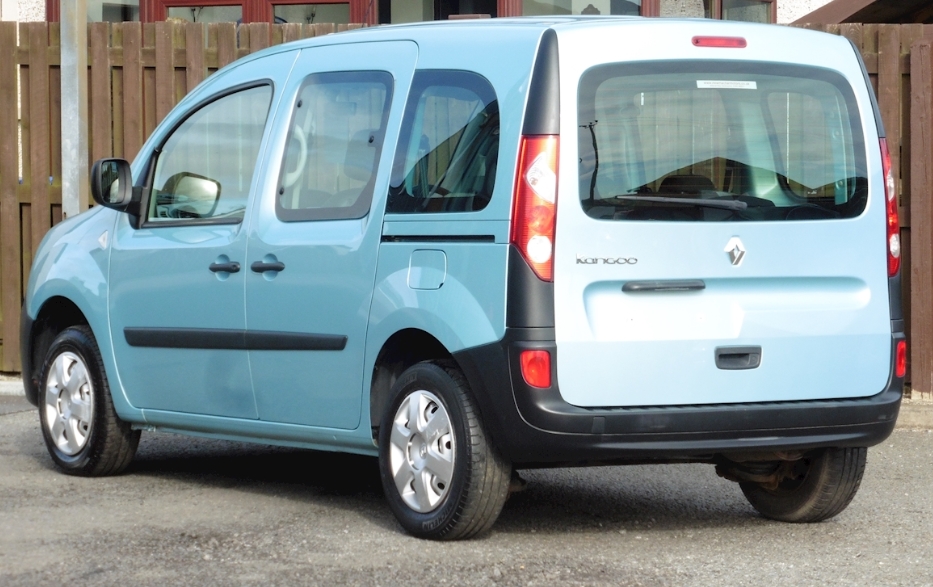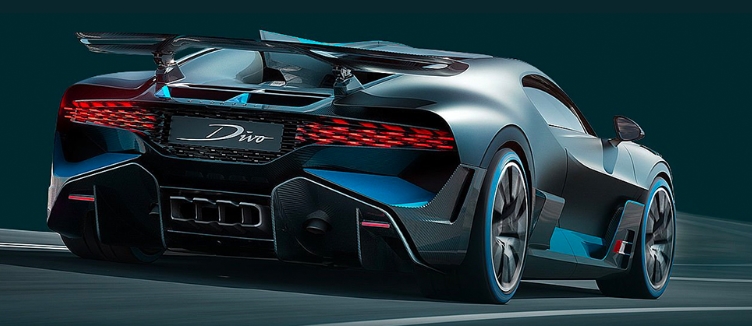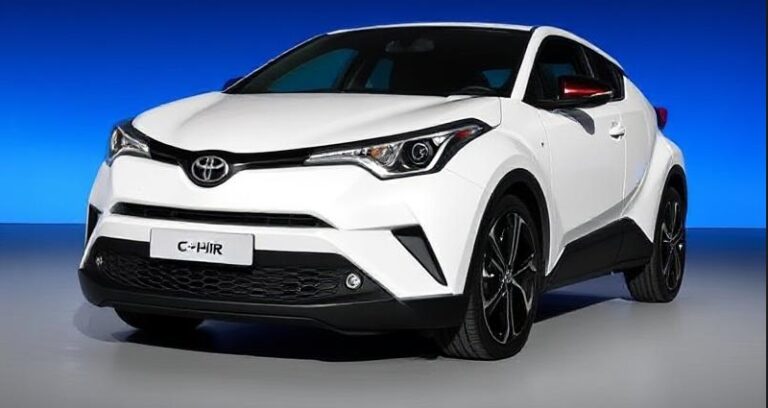The Humble Hero: Charting the Evolution of the Renault Kangoo
From its utilitarian roots as a quirky family van to its modern incarnation as a versatile lifestyle vehicle, the Renault Kangoo has carved a unique niche in the automotive landscape. Far from being a mere box on wheels, this compact MPV has undergone a remarkable evolution, consistently adapting to contemporary needs and tastes while retaining its core identity of practicality and accessibility. Its story is one of quiet innovation, a testament to Renault’s ability to identify and cater to a burgeoning segment of the market.
The Kangoo’s journey began in 1997, with the unveiling of its first generation, the KC0/1. Renault, already a master of compact car design with models like the Clio and Twingo, recognized a gap for a affordable, spacious, and flexible small van adaptable for both commercial and personal use. The KC0/1 was precisely that. Its defining characteristic was its high roofline, a departure from the more car-like proportions of many contemporary MPVs. This immediately conveyed a sense of spaciousness and utility, a promise of carrying capacity and ease of access.
The initial generation was distinguished by its generous interior volume, a flat-folding rear seat creating a vast cargo space, and the signature sliding rear doors – a masterstroke of practicality that made ingress and egress effortless, especially in tight parking spaces, and provided unparalleled access to the rear. These doors quickly became an iconic feature, setting the Kangoo apart from rivals that often relied on conventional hinged doors.
Under the bonnet, the first-generation Kangoo offered a range of engines to suit different needs and budgets. Petrol options typically included a 1.2-liter unit, often with around 60 horsepower, and a more potent 1.4-liter engine delivering approximately 75 horsepower. Diesel enthusiasts could opt for the reliable 1.9-liter D, a naturally aspirated unit producing around 65 horsepower, or later, the turbocharged 1.9-liter dCi, which offered a significant boost in performance and fuel efficiency, with power outputs ranging from 80 to 105 horsepower.
.

.
Trim levels, while not as extensive or luxurious as in larger passenger cars, reflected the Kangoo’s utilitarian focus. Early models often featured basic equipment, emphasizing functionality. Common trim levels included the RN (Renault Nouvelle), the base model, and the RT, which offered a more comfortable and feature-rich experience. The RT variant might have included power steering, electric front windows, central locking, and sometimes a basic radio. Later in the first generation’s life, Renault introduced a more rugged, quasi-SUV version called the Kangoo Trekka, distinguished by its raised suspension, protective body cladding, and sometimes all-wheel drive (though primarily in left-hand drive markets). This was a clear nod to the growing popularity of adventure and outdoor lifestyles.
The first generation underwent a significant facelift in 2003, often referred to as the Phase 2. This update brought a more modern front-end design with new headlights, grille, and bumper, bringing it more in line with Renault’s contemporary styling language. The interior also received revisions, including updated upholstery, a revised dashboard layout, and improved ergonomics. The engine line-up remained largely similar, though the dCi units became more widespread and refined. Trim levels continued to evolve, with designations like Authentique, Dynamique, and Expression appearing, each offering progressively more features, from air conditioning and improved audio systems to alloy wheels and body-colored trim.
The second generation Kangoo (KW0/1) arrived in 2008, marking a substantial departure from its predecessor. While retaining the core practicality, the KW0/1 adopted a more rounded and contemporary design language, making it appear less utilitarian and more like a conventional passenger car. The front end was significantly redesigned, with sleeker headlights and a more sculpted bonnet. The overall silhouette, however, still emphasized its height and spaciousness.
A key innovation of the second generation was the introduction of the Kangoo Be Bop. This was a significantly shorter, two-seater version designed for active individuals and couples. It featured innovative features like a panoramic glass roof and a highly configurable interior, aiming to be a stylish and versatile urban explorer. The Be Bop, though a niche product, demonstrated Renault’s willingness to experiment with the Kangoo’s format.
The standard second-generation Kangoo continued to offer a wide array of practicality. The sliding rear doors remained a cornerstone, and the interior was designed for maximum flexibility, with a range of seating configurations and clever storage solutions. The engine range expanded to include more fuel-efficient options. Petrol engines might have included a 1.6-liter unit with around 105 horsepower, while diesels were dominated by the 1.5-liter dCi, offered in various power outputs from 75 to 110 horsepower, renowned for their excellent fuel economy. A more powerful 1.6-liter 16v engine also found its way into some models.
Trim levels in the second generation became more sophisticated. Expression often served as the entry-level model, offering essential features. Dynamique added more creature comforts, such as climate control, upgraded audio systems, and cruise control. Higher-spec trims might have incorporated features like satellite navigation, parking sensors, and a hands-free key card. Renault also continued to offer commercial versions of the Kangoo, known as the Kangoo Express, which were optimized for load carrying with simpler interiors and a focus on durability.
The second generation also saw the introduction of the Kangoo Z.E. (Zero Emissions) in 2011. This all-electric variant was a pioneering move in the compact van segment, offering a sustainable and cost-effective solution for urban logistics and private use. The Z.E. featured a distinctive charging port and was powered by a silent electric motor, paving the way for future electrification within the Kangoo range.
The second generation also received a facelift in 2013, bringing a refreshed exterior look, including a new grille and bumper, and an updated interior with improved materials and technology. This update aimed to keep the Kangoo competitive in a rapidly evolving market.
The third generation Kangoo, launched in 2021, represents the most significant evolution yet. This new model is even more car-like in its styling and sophistication, blurring the lines between MPV and compact SUV. The exterior design is sharper and more modern, with a distinctive front grille and LED lighting signatures. The interior has undergone a revolution, focusing on premium materials, advanced technology, and enhanced comfort.
The third generation Kangoo is available in two distinct versions, targeting different customer needs. The Kangoo Combi is the passenger-focused model, offering up to seven seats and a focus on family holidays and leisure activities. The Kangoo Van continues the commercial heritage, providing a robust and versatile load space for businesses.
The interior of the Kangoo Combi is particularly impressive, featuring a modern dashboard with a large touchscreen infotainment system, digital instrument cluster (on higher trims), and a host of driver assistance systems. Renault has emphasized modularity and practicality, with a range of seating configurations and clever storage solutions, including the innovative “Easy Inside Rack” for storing long items above the passengers. The sliding rear doors remain, and Renault has also introduced a “3 doors” version on some commercial variants, offering even greater flexibility.
Under the bonnet, the third-generation Kangoo continues to offer a range of efficient powertrains. Petrol options typically include a 1.3-liter TCe engine, available in different power outputs. Diesel enthusiasts can choose from the familiar 1.5-liter dCi, also in various guises. Crucially, the all-electric Kangoo E-Tech Electric is now a central part of the range, offering a substantial electric range and fast-charging capabilities, firmly establishing Renault’s commitment to electrification in this segment.
Trim levels for the third generation have been refined to reflect its more premium positioning. For the Combi, expect designations like Equilibre, Techno, and potentially a sportier Esprit Alpine variant. The Equilibre would be the entry point, offering essential features and comfortable seating. The Techno would bring a significant upgrade in technology and comfort, including larger infotainment screens, advanced driver aids, and premium interior trim. The Esprit Alpine would likely incorporate sporty styling cues and enhanced features. Commercial variants, the Kangoo Van, will likely retain more functional nomenclature, focusing on load capacity and practicality.
Throughout its nearly three-decade journey, the Renault Kangoo has demonstrated an extraordinary ability to adapt and thrive. From its humble, boxy beginnings as a no-nonsense load-lugger and family transporter, it has evolved into a sophisticated, technologically advanced, and increasingly electrified vehicle. It has consistently championed practicality, affordability, and versatility, proving that even the most utilitarian of concepts can be imbued with charm and ingenuity. The Kangoo’s enduring appeal lies in its unwavering commitment to these core principles, making it a true humble hero of the automotive world, ready for whatever the next chapter of its evolution may bring.







